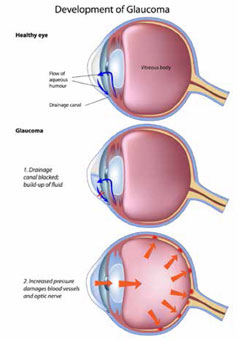By Shirley Ha, HBSc., O.D.
Nowadays, it makes less sense than in the past to focus marketing dollars on direct mail, newspaper advertising, newsletters, etc., in an effort to gain or influence patients when social media is creating new practice spaces and online voices free of charge. Patients use the Internet and social media to research, gossip and exchange information about eyecare products and professionals. They could be shopping online for the exact products you sell, in particular contact lenses, while they’re getting their eyes examined. Unfortunately, eyecare professionals often fail to recognize the marketing they can do through their own practices, efforts such as inbound (online) and internal marketing that support patient relationships leading to sales.
Branding is Key
Ever heard of Disney, Starbucks and McDonald’s? If you don’t have a brand, you need to develop one and you should use it on everything, all the time and everywhere – Facebook, Twitter, Instagram, YouTube, LinkedIn, Pinterest, and Google+, to name a few. Not only does a brand help to ensure that patients have the image of you that you want them to have, it also sets the foundation for future patient engagement and accessibility. Patients need to buy WHO you are and WHAT you do before they buy products and services from you. Your uniqueness trumps that of your competitors, particularly if you fit specialty lenses. This is especially true in the case of companies like Clearly Contacts when it comes to specialty services, such as Keratoconic fits, and orthokeratology.
Constructing a social networking profile is key and should include having a blog to brand your human personality. The content you deliver should be relatable, honest and genuine, while educational content should be useful for your target patients. Keep current and post timely information about contact lenses and any other products you sell. If you are not a good writer consider hiring someone to ghost write for you.
Arrange to have neighboring businesses hyperlink to some of your social media channels and offer to do the same for them. This will create instant free advertising for both parties. As Rand Fishkin (@Moz), co-founder and CEO of Moz, an inbound marketing company, said, “The best way to sell something: don’t sell anything. Earn the awareness, respect and trust of those who might buy.”
Office Culture/Environment
Meeting and exceeding patient expectations all the time begins with investing and employing the right people and cultivating positive attitudes and effectiveness under your leadership. Contact lens (CL) promotion should be cross-pollinated internally, from the original contact (phone, Internet) to pretesting, to exam room, to dispensary, where sales of peripherals, such as sunglasses, backup glasses, comfort drops, and contact lens solutions, can also be made. Your office should visually shout, “We do contact lenses!” the moment people walk through the door. The décor should be changed periodically to create the sense that there is always “more to see”; this will encourage people to visit more often and to bring in their families and friends. The office should look busy to convey the message that others recognize you as the “go-to” service provider. Reserve hard-to-book times during the day for continuing education, creative activity and the development of new marketing ideas (not rules) for further experimentation.
Taking Care of Business
Your business is your patients. Be proactive – don’t wait for a query about CLs, offer everyone the opportunity to discuss how contact lenses can benefit them (no glasses, less peripheral distortion with high prescriptions, a wider field of view). As the late Steve Jobs said: “People don’t know what they want until you show it to them.”
Understanding and thinking like your patients as well as matching your marketing efforts with the way they shop and buy contact lenses are important. Stay one step ahead of them. Anticipate and meet patients’ needs and have their next supply of CLs, a new case and solution ready for pickup before they run out. Give your busy patients same-day fitting and training instead of allowing their interest or enthusiasm to wane by scheduling another appointment. Surprise former CL wearers with a “free” trial pair of newer-technology lenses to show that you are modern and up-to-date.
Don’t pre-judge what patients can afford. Reduce their risk in buying from you with value-added service, make it attractive to buy by pricing your lenses reasonably and offering discounts for bulk orders. Give patients a “one-stop shopping/buying” experience by getting advance permission to sell to them with an effective recall system.
Happy patients are your greatest and most powerful assets. What better marketing is there than patient testimonials displayed everywhere in your office?
In short, don’t underestimate the power of social media and inbound marketing to attract, engage and retain patients. Equally important is a solid internal marketing plan designed to build long-term patient loyalty and prevent loss of income by eliminating avoidable walkouts.




